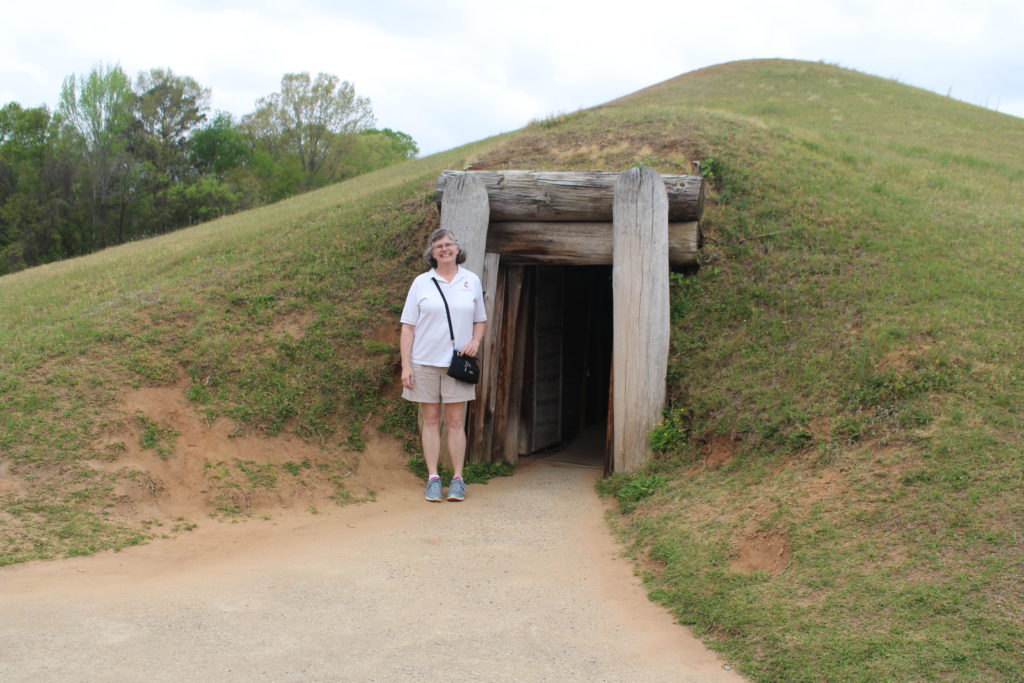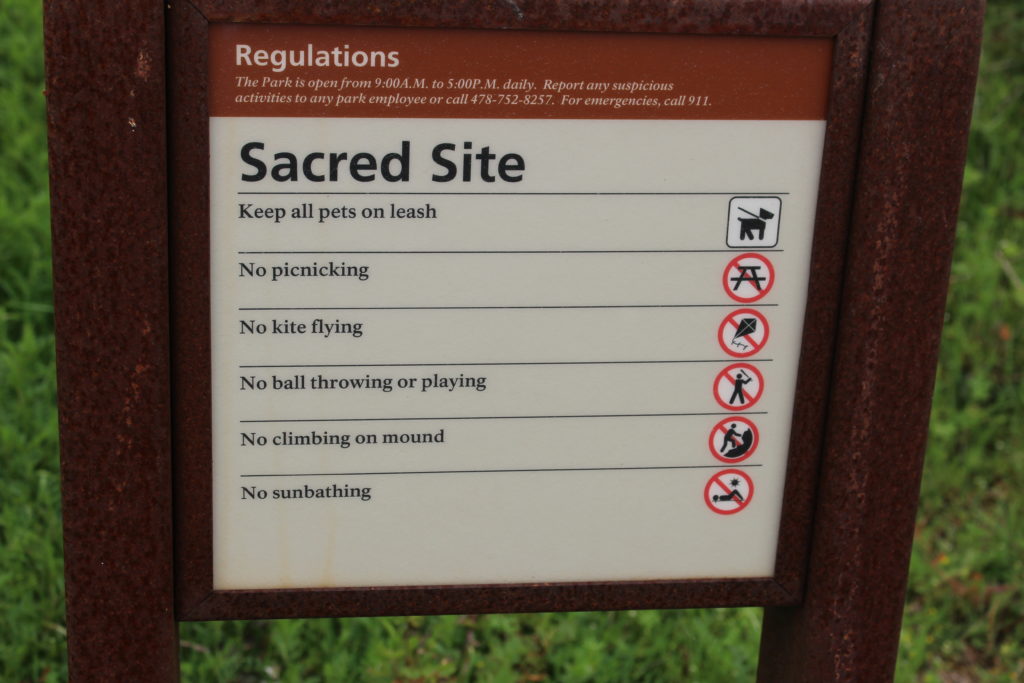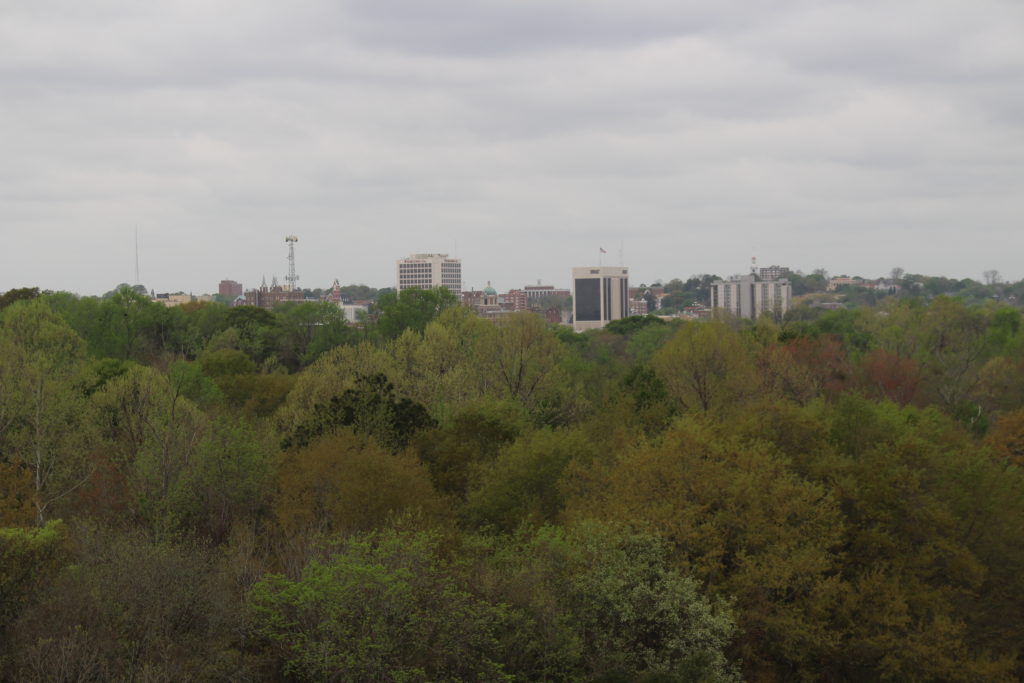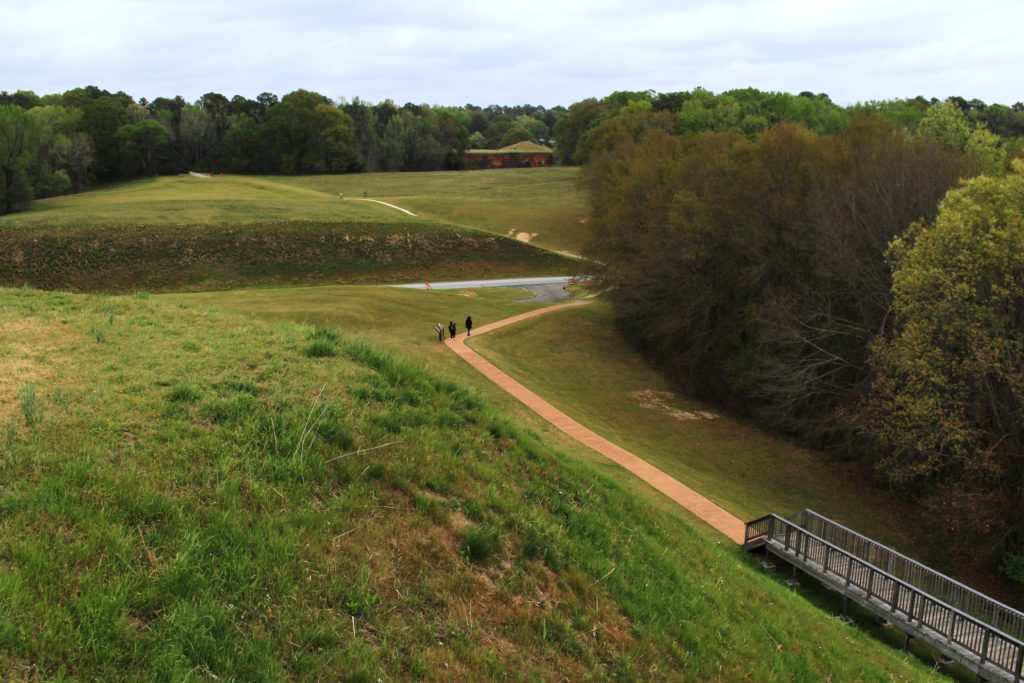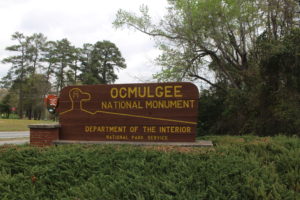 Ocmulgee National Monument is the final national park site we saw on our three day trip through southern Georgia. Ocmulgee is in Macon – the geographic center of the state. It is the site of 10,000 years of occupation by Indians, from Ice Age hunters to Creeks. Between 900 and 1100 the Mississippian culture dominated this area.
Ocmulgee National Monument is the final national park site we saw on our three day trip through southern Georgia. Ocmulgee is in Macon – the geographic center of the state. It is the site of 10,000 years of occupation by Indians, from Ice Age hunters to Creeks. Between 900 and 1100 the Mississippian culture dominated this area.
Mississippian Indians were mound builders. We have visited other mound sites, including Poverty Point, Hopewell Culture, and Moundville. They are all interesting places testifying to advanced, organized, agrarian cultures with time for architecture and religion. The Mississippian Indians at Ocmulgee built mounds for religious purposes and to denote status. Whoever had the highest status lived on top of the tallest mound. Consequently the tallest mound is the Temple Mound.
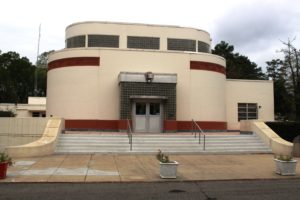 First we visited the Visitors Center at Ocmulgee. There was a movie about the cultures of the various Indians who lived on this site. There were interesting exhibits with sections dedicated to the Paleo-Indians, Archaic Indians, Woodland Indians, Early Mississippians, Late Mississippians, and Creek. Artifacts from each era are on display. We also checked out the gift shop.
First we visited the Visitors Center at Ocmulgee. There was a movie about the cultures of the various Indians who lived on this site. There were interesting exhibits with sections dedicated to the Paleo-Indians, Archaic Indians, Woodland Indians, Early Mississippians, Late Mississippians, and Creek. Artifacts from each era are on display. We also checked out the gift shop.
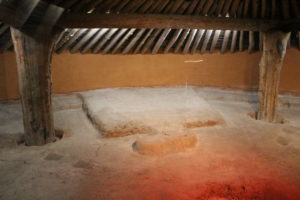 Then we out to the grounds of Ocmulgee National Monument. We visited the Earthlodge first. This is a reconstruction of a meeting place for the town’s political and religious leaders. The original clay floor of the lodge is 1,000 years old. We saw the village site, the Cornfield Mound, some prehistoric trenches, and an Eighteenth Century trading post.
Then we out to the grounds of Ocmulgee National Monument. We visited the Earthlodge first. This is a reconstruction of a meeting place for the town’s political and religious leaders. The original clay floor of the lodge is 1,000 years old. We saw the village site, the Cornfield Mound, some prehistoric trenches, and an Eighteenth Century trading post.
We walked past the Funeral Mound, where over 100 burials were uncovered. Railroad construction destroyed much of the mound in the 1870’s. We also saw the Lesser Temple Mound, destroyed by railroad construction in the 1830’s.
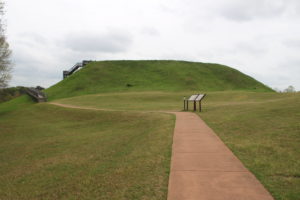
We climbed to the top of the Greater Temple Mound. It is a huge structure close to 40 feet tall. When the Mississippians were here, there was a wooden structure on the top used for important religious ceremonies. It is hard to imagine all the baskets full of dirt hauled up this mound to build it.
We finished our visit to Ocmulgee National Monument by walking along the Opelofa Trail and the Bartram Trail through the wetlands and woods. The site also has some Civil War historic markers but we did not stop to see them. We wanted to stay in the distant past, imagining the lives of the Indians who built this beautiful site.

